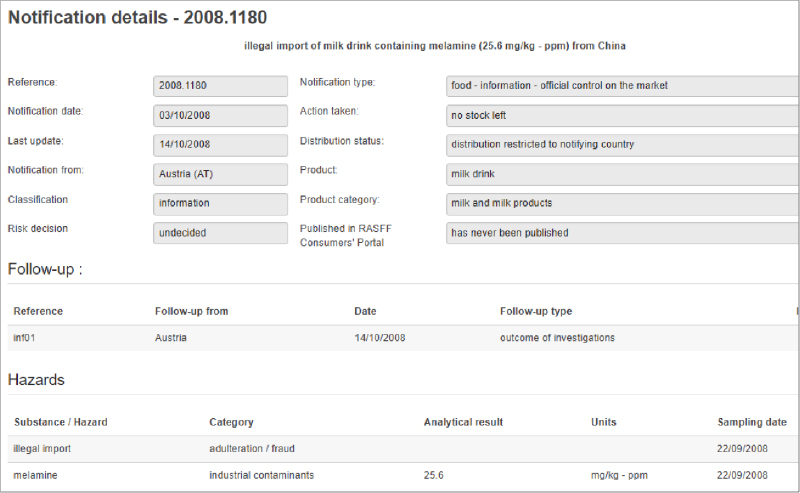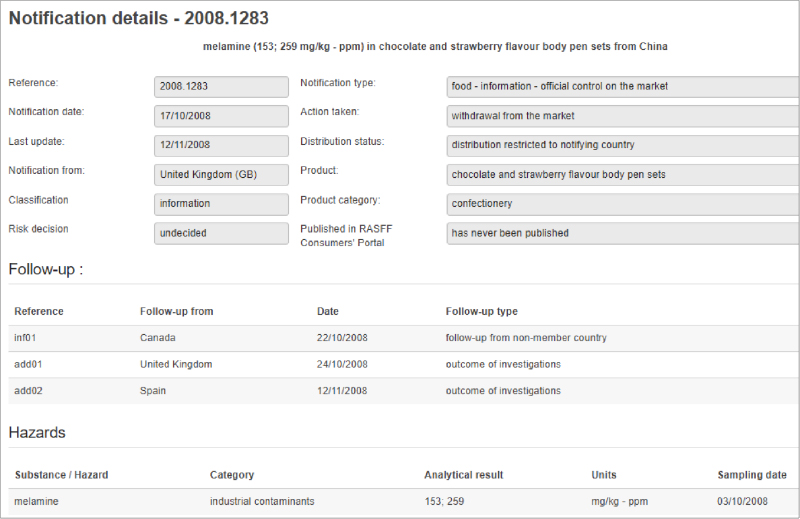Livestock legislation
The applicable legislation includes:
- the Food Safety Law;
- the Law on the Quality and Safety of Agricultural Products;
- the Law on Animal Epidemic Prevention;
- the Management Regulations on Slaughtering Live Pigs;
- the Interim Management Regulations on Quality of Meat and Meat Products; and
- the Measures on the Administration of Animal Quarantine.
Local regulations on slaughtering livestock and poultry also apply (eg, regulations enacted by the Shanghai local government in this respect that govern the livestock slaughtering within Shanghai).
Meat for export is also governed by the following legislation:
- the Law on Import and Export Commodity Inspection;
- the Law on Entry and Exit Animal and Plant Quarantine;
- the Regulations for the Implementation of the Law on Entry and Exit Animal and Plant Quarantine;
- the Regulations on the Places of Origin of Imports and Exports;
- the Administrative Provisions on the Filing of Export Food Manufacturers; and
- the Measures for the Supervision and Administration of Inspection and Quarantine of Imported and Exported Meat Products.
Food safety regulations for meat and poultry products, etc.
The fundamental legislation on food safety in China is the Food Safety Law (FSL) and its implementing regulations. The FSL governs the following activities within China:
- food production and processing, food sales and catering services;
- production of and trading in food additives;
- production of and trading in food-related products, including food packaging materials, containers, detergents, disinfectants, and tools and equipment that are used in the production of and trading in food;
- use of food additives and food-related products by food producers or traders;
- storage and transport of food; and
- management of the safety of food, food additives and food-related products.
The FSL also applies the formulation of relevant quality safety standards and the release of the relevant safety information for edible agricultural products, as well as agricultural inputs, to the marketing of edible agricultural products.
The safety of edible agricultural products is governed by the Law on the Quality and Safety of Agricultural Products.
Food safety is administered by the following four ministry-level authorities:
- the State Administration for Market Regulation (SAMR): domestic food production, distribution, consumption and enforcement, etc; and import and export supervision of food products, etc;
- the Ministry of Agriculture and Rural Affairs (MoA): domestic primary agriculture production, slaughter and genetically modified organism (GMO) oversight, etc; and
- the National Health Commission: food safety risk assessment and surveillance, food safety standard development and unification, and outbreak response, etc.
The authorities listed above promulgate the specific regulations in their respective governing fields in the form of administrative regulations, including the following:
- the Administrative Measures for Food Production Licensing;
- the Administrative Measures for Food Operation Licensing;
- the Administrative Measures for the Registration and Recording of Health Food;
- the Administrative Measures for the Registration of Food for Special Medical Purposes;
- the Administrative Measures for the Registration of Formulas of Infant Formula Milk Powder;
- the Administrative Measures for Food Recall;
- the Administrative Measures for the Import and Export of Food;
- the Relevant Applicable Standards for Inspection on Imported Food and Food Additives;
- the Rules on Administrative Licensing of Imported Food without National Food Safety Standards;
- the Administrative Measures for Registration of Overseas Manufacturers of Imported Food;
- the Administration Regulations on Label Inspection and Supervision of Import and Export Pre-packaged Food;
- the Provisions for Administration of the Registration of Foreign Exporters and Agents of Food Products and Consignee of Imported Food Products to China;
- the Administrative Provisions on Recording of Import and Marketing of Imported Food;
- the Administrative Provisions for the Record-Filing of Export Food Manufacturers;
- the Rules of Bad Records Administration on Imported Food;
- the Administrative Measures for New Varieties of Food Additives;
- the Measures for the Supervision and Administration of the Safety of Food Offered through Online Catering Services; and
- the Measures of Investigation of Illegal Conducts Concerning the Safety of Food Sold Online.
Another important instrument in the food safety regime is the national food safety standard system. Currently there are more than 600 effective national food safety standards including:
- general standards (eg, contaminates and microbial);
- product standards (eg, dairy products and beverage);
- additive specification (eg, colourant and sweetener);
- food-related products (eg, plastic and metals);
- good practice (eg, hazard analysis and critical control points); and
- testing methods (eg, the physical-chemical method).
Safety enforcement
Food producers or traders violating the law or regulations on food safety will be subject to civil liabilities, or administrative or criminal penalties.
A consumer who has been harmed by food that does not conform to food safety standards may seek compensatory damages from a responsible producer or trader as well as punitive damages of up to 10 times the original sale price.
The measures of administrative enforcement include:
- confiscation of the illegal proceeds, food and food additives illegally produced or traded in, and the tools, equipment, raw materials and other articles used in the illegal production or trading;
- revoking relevant licences;
- ordering a suspension of production or trading;
- an administrative fine; and
- cancelling qualifications to engage in food inspection.
Under the criminal law, any food producer or trader that does not comply with food safety standards and any person adding poisonous substances to food is subject to criminal sanctions, including fines, confiscation of property, criminal detention and imprisonment. The death penalty is a potential punishment for very serious food safety incidents.
Certification programmes and regulations for genetically modified foods and organic foods.
Certification of organic foods
The Certification and Accreditation Administration of China (CNCA), a subordinate body to the SAMR, is responsible for issuing the official organic label (via certifiers). It also controls and supervises the accreditation process of all certification bodies and grants licences to individual organic inspectors employed by certifiers. The Administrative Measures for Organic Product Certification (AMOPC) cover a wide range of aspects that encompass the competences of the certification bodies as well as the responsibilities of the competent authorities on monitoring the functioning of the certification activities.
The AMOPC sets forth the responsibilities of certification institutes and the procedures that they must undergo towards the CNCA. Among other responsibilities, a certifier is required to ensure the integrity, objectiveness and truthfulness of the certification process, and make a complete record for archive retention to ensure that the certification process and results are traceable. The records of all activities are kept for five years. Further, certification institutes implement effective follow-up inspections of the certified products and their production and processing methods to ensure that the certification conclusions can continue to meet the certification requirements.
In certain cases of non-compliance or fraudulent practice by the producer, the certifier shall suspend or revoke the certificate and publicise the penalty. The certifier can be fined or even disqualified if it fails to do so.
Safety certificate of GMO foods
The law on GMOs places emphasis on improving the GMO cultivation and safety evaluation systems. The purpose of safety evaluation of GMOs is to detect the dangers or potential risks caused by GMOs to humans, animals, plants and microorganisms and the environment.
A safety certificate will be issued to a new GMO that has passed the safety evaluation conducted by the Agriculture GMO Safety Committee of the MoA. Under the GMO Regulations, a safety certificate is mandatorily required to conduct the examination, registration, evaluation or approval of certain GMOs including: transgenic planting seeds; livestock and poultry breeds and aquatic fry; pesticides; veterinary drugs; fertilisers; additives; and other things produced using GMOs or containing GMO ingredients.
Food labelling requirements (including the applicable enacted legislation, enforcement and penalties)
The FSL sets out the general requirements of labelling, mandatory particulars for labels of pre-packaged foods, non-pre-packaged foods and food additives, and special rules for health food, infant formula foods and imported foods, etc. Food and food additives that do not conform to the contents stated on their labels and instructions shall not be sold in the market.
The relevant national standards, including the General Rules for the Labelling of Pre-packaged Foods (GB7718-2011), the General Rules for Nutrition Labelling of Pre-packaged Foods (GB28050-2011) and the General Rules for the Labelling of Food Additives (GB 29924-2013), provide further detailed guidance in their respective aspects.
If the packaged food or food additive is produced or traded without labels or their labels do not conform with the law, the local branches of the SAMR will confiscate the illegal proceeds, food and food additives that were illegally produced or traded in, and may also confiscate the tools, equipment, raw materials and other articles used in the illegal production or trading.
If the value of the food or food additives in the illegal production or trading is less than 10,000 yuan, a fine not less than 5,000 yuan, but not more than 50,000 yuan, will be imposed. If the value of the food or food additives in illegal production or trading is 10,000 yuan or more, a fine not less than five times but not more than 10 times the value of the food will be imposed. In the event of a serious offence, the production or trading will be suspended until the relevant licence is revoked.
If the labels have a defect that does not affect the foods’ safety or does not mislead consumers, the local branches of the SAMR will order the producer or trader to make corrections. In the case of refusal to do so, a fine of not more than 2,000 yuan will be imposed.
If the production enterprise of infant formula foods fails to report the labels to the competent local branch of the SAMR for filing as required by law, the local branch of the SAMR will issue a correction order and warning. In the case of refusal to make corrections, a fine not less than 5,000 yuan, but not more than 50,000 yuan, will be imposed. In the event of a serious offence, the production or trading will be suspended until the relevant licence is revoked.
List the main applicable enacted legislation regarding health of food animals, including transportation and disease outbreak and management.
The principal legislation dealing with the health of food animals is as follows:
- the Law on Animal Epidemic Prevention;
- the Animal Husbandry Law;
- the Administrative Measures for Animal Quarantine; and
- the Law on the Entry and Exit Animals and Plants Quarantine.
Animal movement restrictions
The movement (transportation) of animals is subject to the following legal requirements.
Quarantine certificate
Before transporting animals, the owner must submit an application to the local animal health supervision institution for quarantine. For the animals and animal products that are to be transported by rail, highway, waterway or air, the consignor must provide the quarantine certificates; otherwise, the carriers will not accept them for transport.
Equipment requirement
The vehicles for carrying animals, as well as the bedding, packages and containers, must satisfy the requirements for animal epidemic prevention laid down by the administrative department for veterinary medicine under the State Council.
Staff requirement
People who are infected with a zoonosis shall not directly transport susceptible animals.
Prohibited circumstances
It is prohibited to transport animals that:
- are in enclosed epidemic areas and related to the outbreak of animal epidemics;
- are in an epidemic area and susceptible to infection;
- have not undergone the quarantine required by law or fail to pass the quarantine;
- have already contracted epidemic diseases or are suspected of having contracted epidemic diseases;
- are deceased (owing to illness or uncertain reasons); and
- do not conform to the regulations of the administrative department for veterinary medicine under the State Council governing animal epidemic prevention.
China has not enacted any laws or regulations dealing with the welfare of animals in transport.
Slaughte legislation
In China, livestock slaughtering is deemed to be part of the primary processing of live animals. Local regulations on slaughtering livestock and poultry also apply (eg, regulations enacted by the Shanghai local government in this respect that govern the livestock slaughtering within Shanghai).
Pest control requirements
Plant protection products and most biocidal products are regulated by the Regulation on Pesticide Administration, which covers the registration, production, distribution and use of pesticides, and is administered by the MoA.
The Institute for the Control of Agrochemicals, under the MoA, regulates pesticides manufactured and marketed in China. Pursuant to the revised Regulation on Pesticide Administration 2017, the Review and Registration Committee will be established by the MoA to review and register the pesticide before being marketed and exported to China.
There are also other regulations concerning pesticides, including:
- the Implementation Measures of the Regulation on Pesticide Administration;
- the Management Measures for the Production of Pesticides;
- the Provisions on the Administration of the Restricted Use of Pesticides; and
- the Measures for the Administration of Pesticide Labels and Manuals.
To ensure food safety, promote producer compliance with good agricultural practices, and eliminate unnecessary pesticide use to protect the ecological environment, the MoA and the NHFPC have jointly released a new standard on maximum residue limits: the National Food Safety Standard – Maximum Residue Limits for Pesticides in Food (GB 2763–2019).
Plant quarantine
The key legislation regulating plant quarantine includes:
- the Regulation on Plant Quarantine;
- the Rules of Implementation of the Regulation on Plant Quarantine;
- the Law on the Entry and Exit Animals and Plants Quarantine; and
- the Rules of Implementation of the Law on the Entry and Exit Animals and Plants Quarantine.
The MoA, the State Forestry Administration and the SAMR are responsible for agricultural plant quarantine, forest plant quarantine and import and export plant quarantine respectively. Surveillance, pest outbreaks and invasive species management is undertaken by the National Agro-tech Extension and Service Centre, a public institution directly under the MoA.
Animal quarantine
Animal quarantine is mainly governed by the following legislation:
- the Law on Animal Epidemic Prevention;
- the Animal Husbandry Law;
- the Quarantine Law on the Entry and Exit Animals and Plants Quarantine;
- the Rules of Implementation of the Law on the Entry and Exit Animals and Plants Quarantine;
- the Measures on the Administration of Animal Quarantine;
- the Measures on the Quarantine and Administration of Hereditary Substance of Inward Animals; and
- the Administrative Regulations on Breeding Livestock and Poultry












